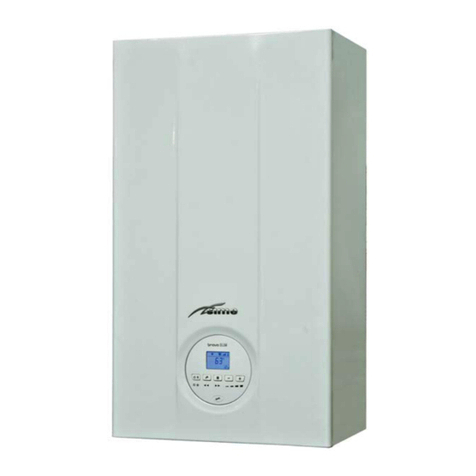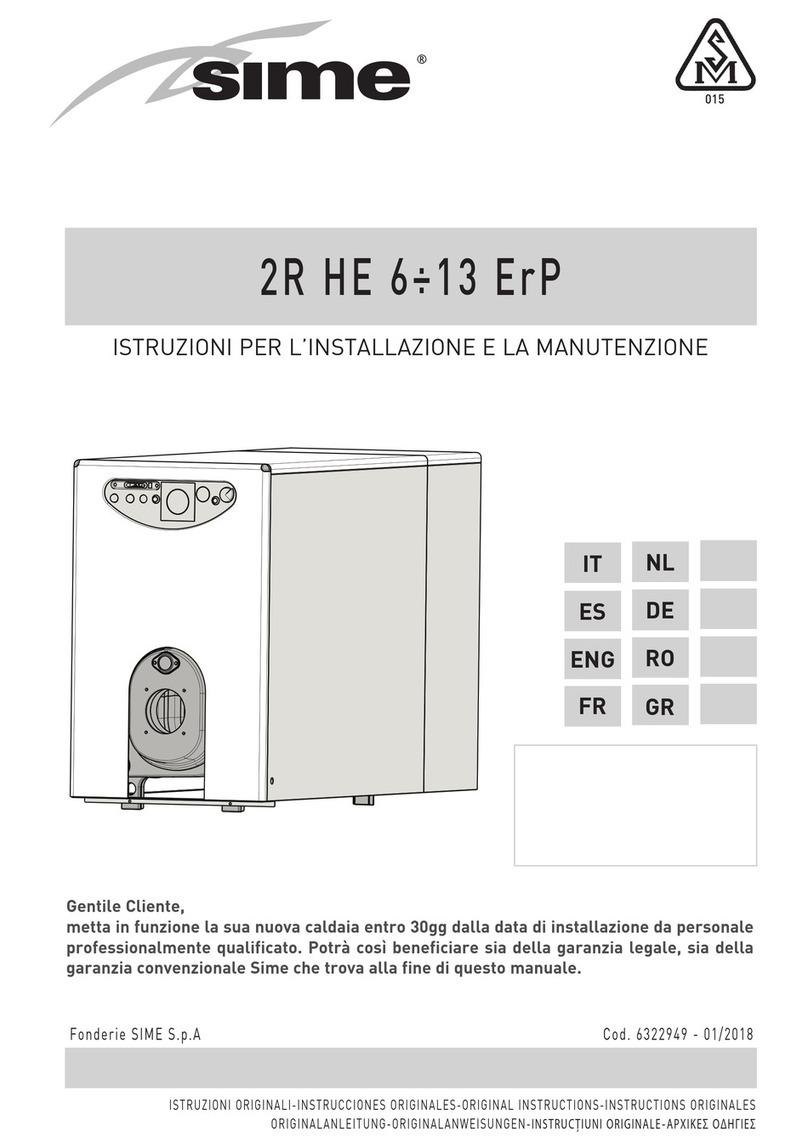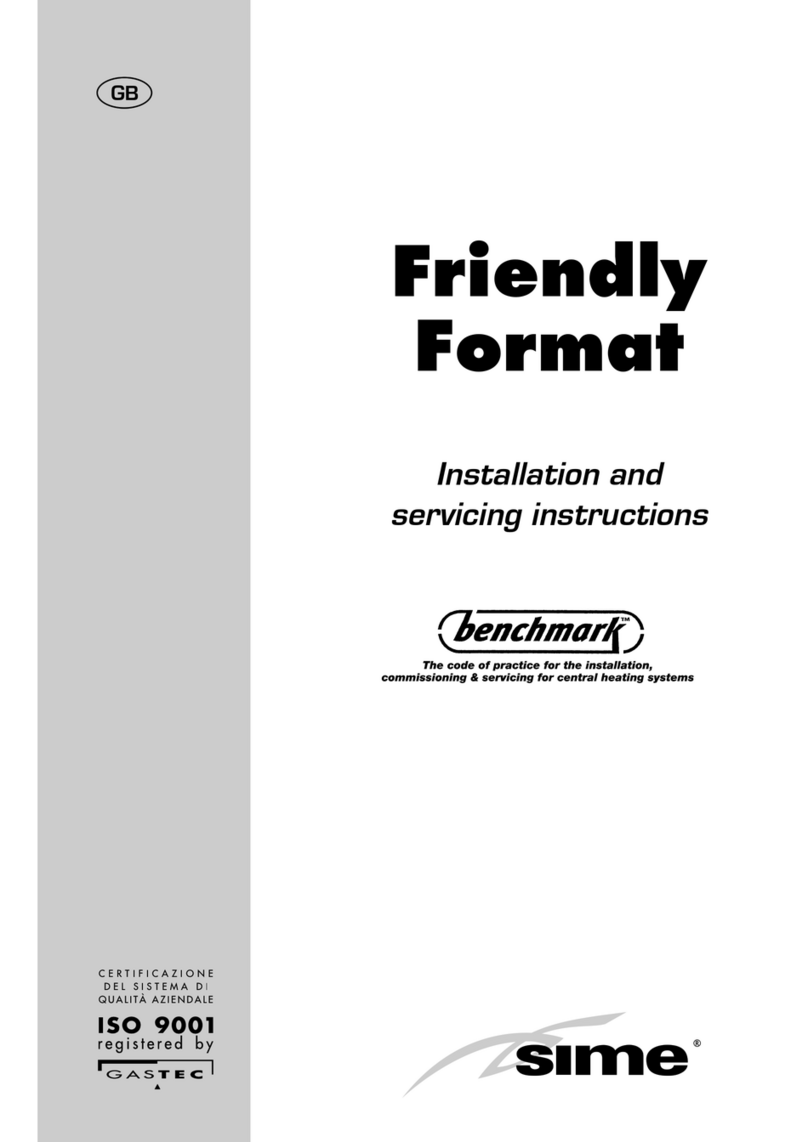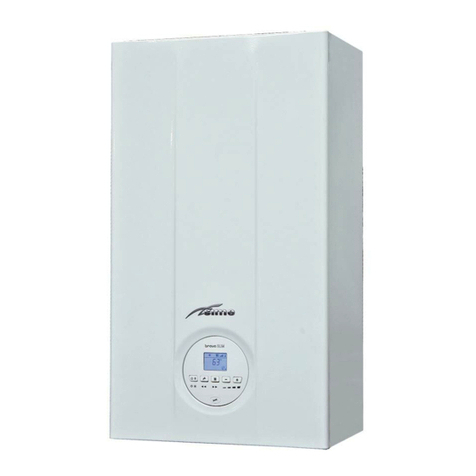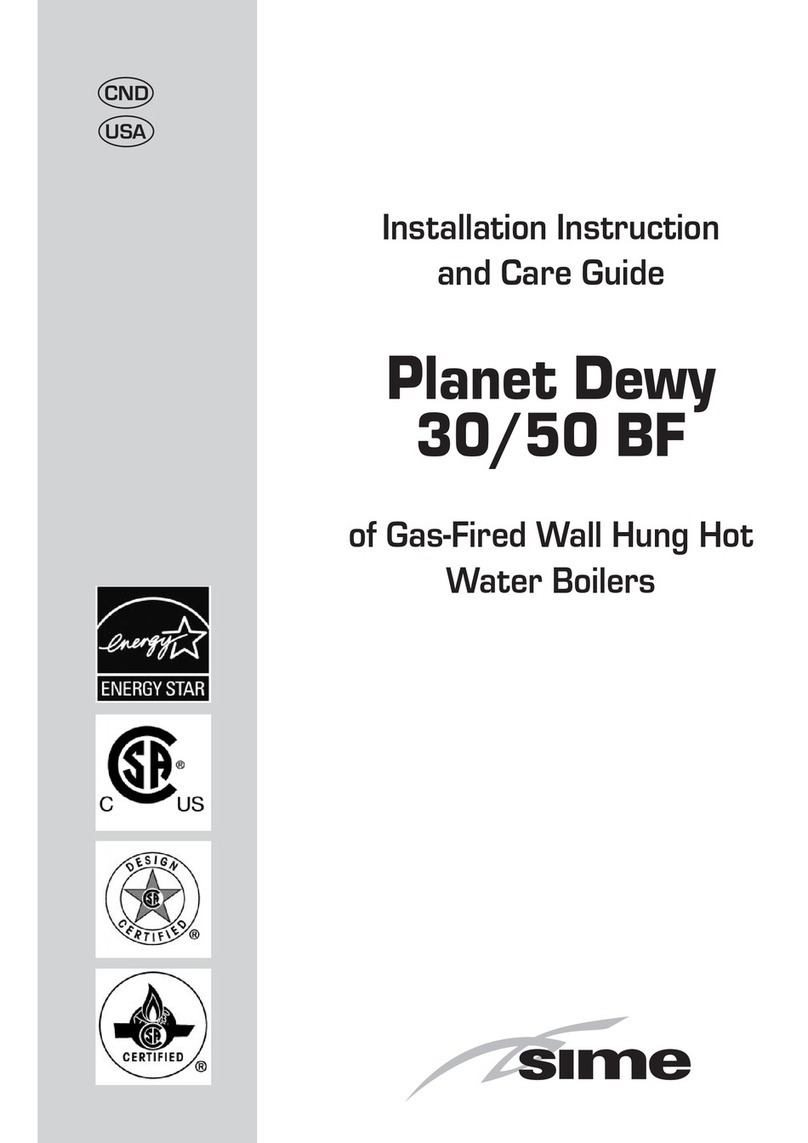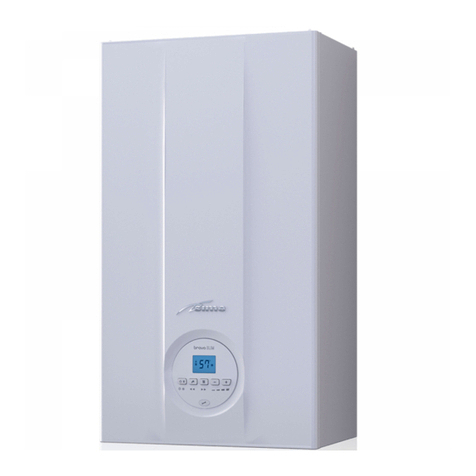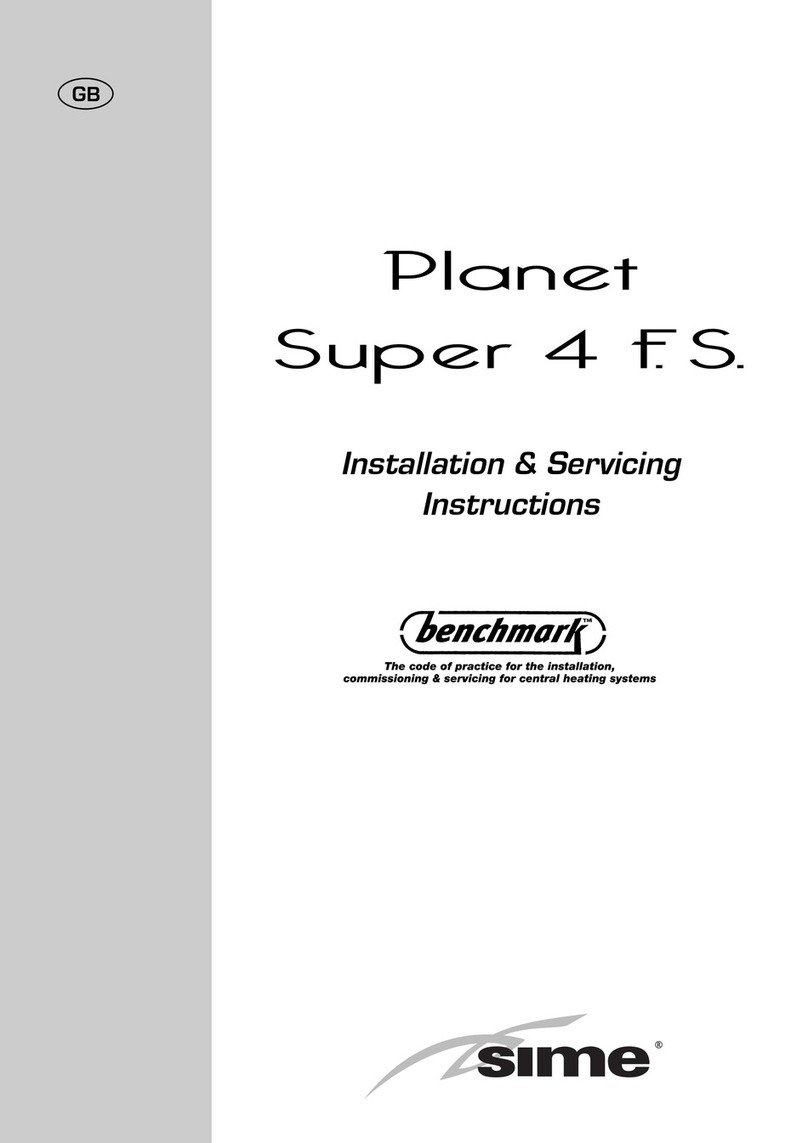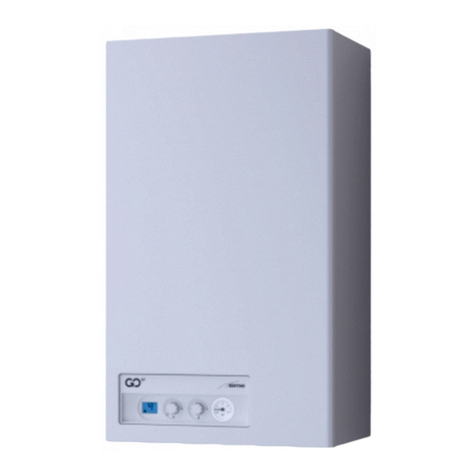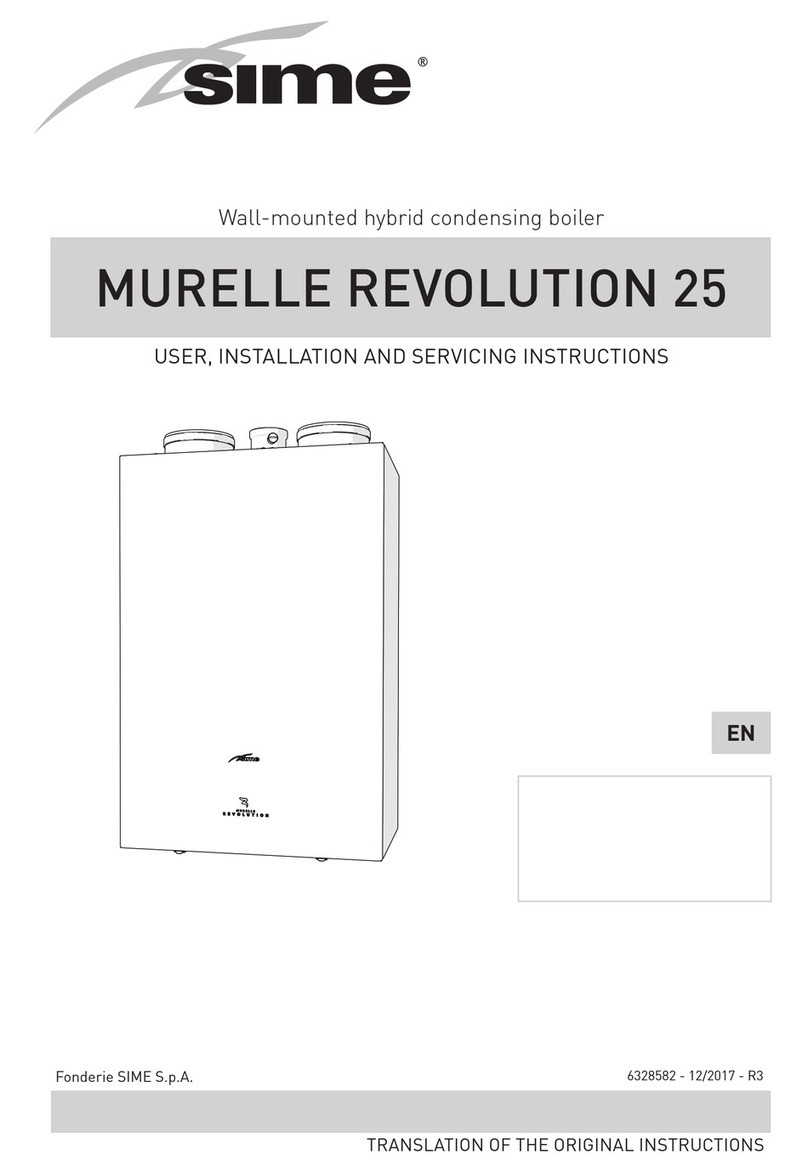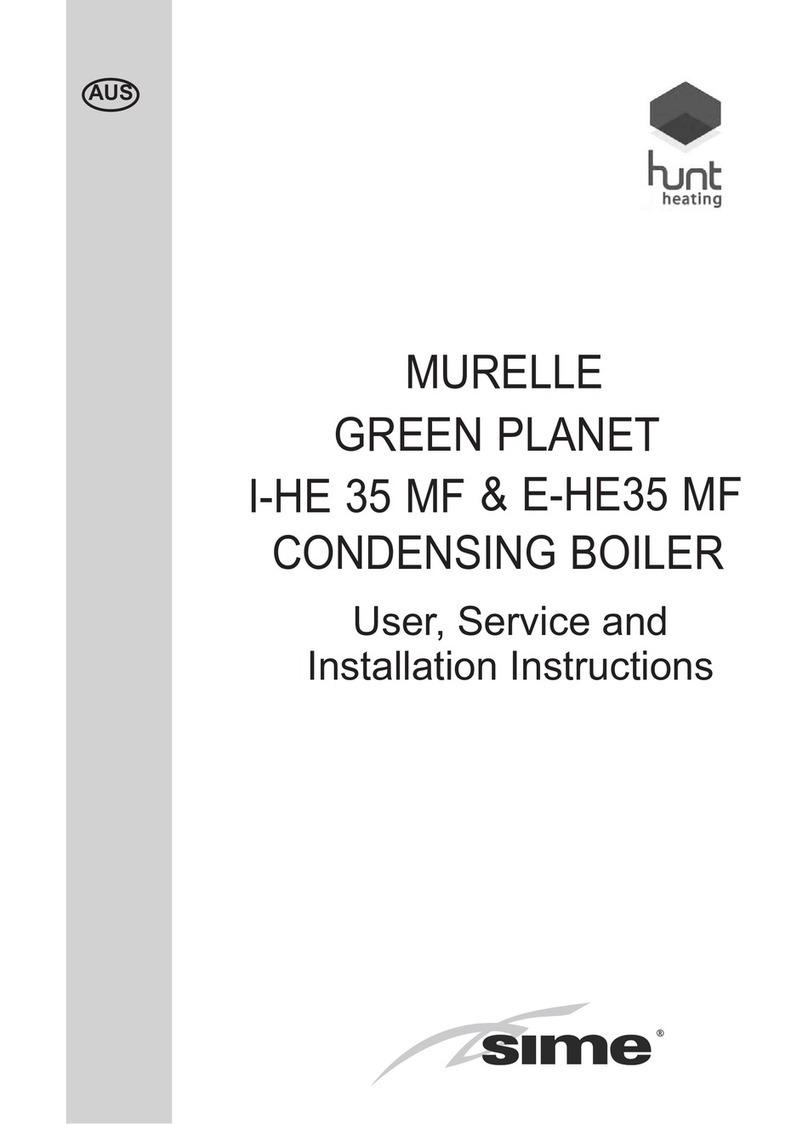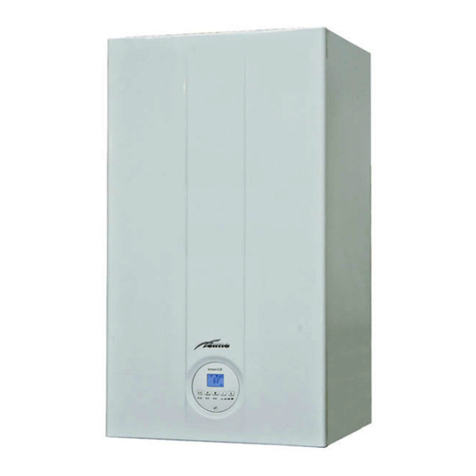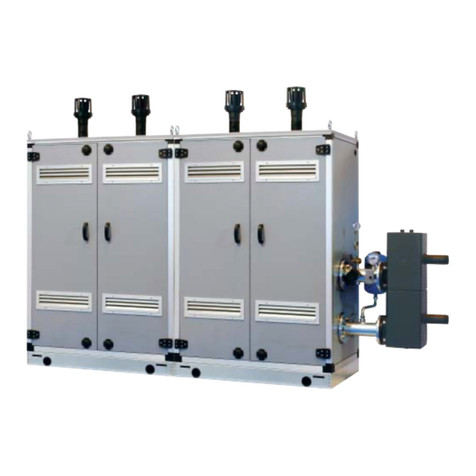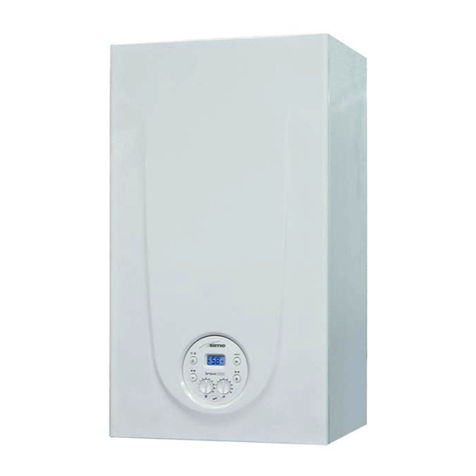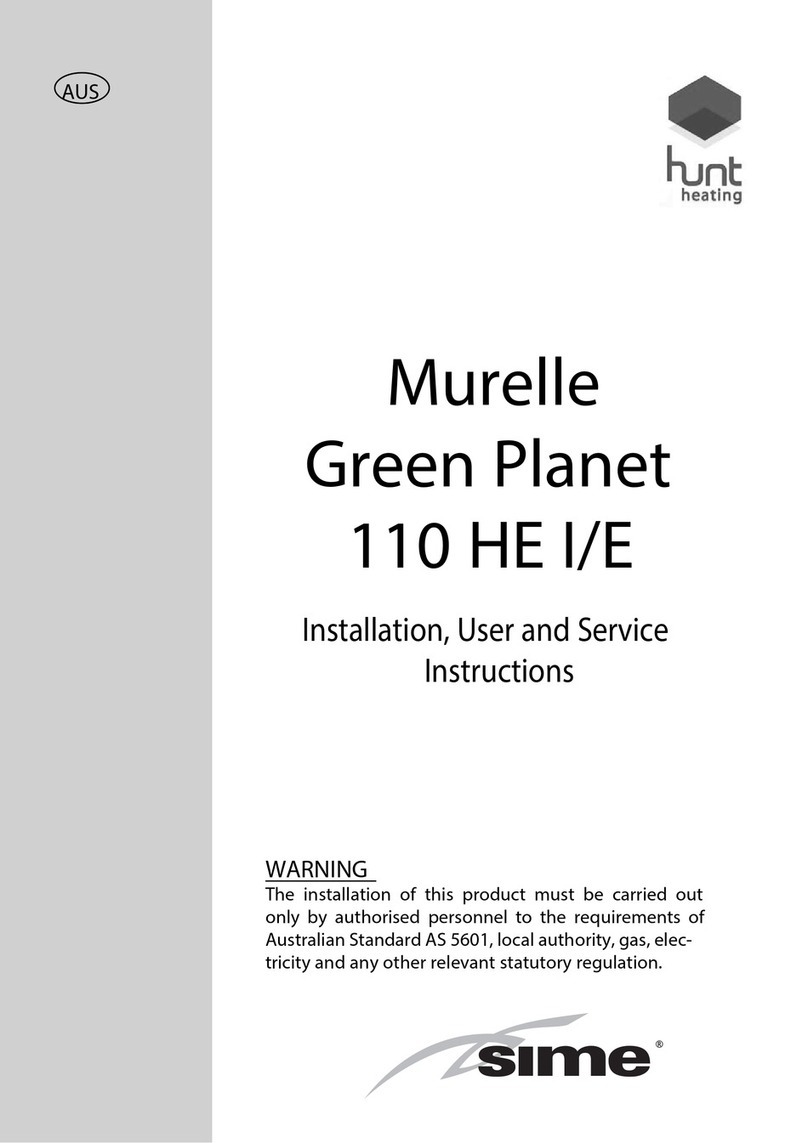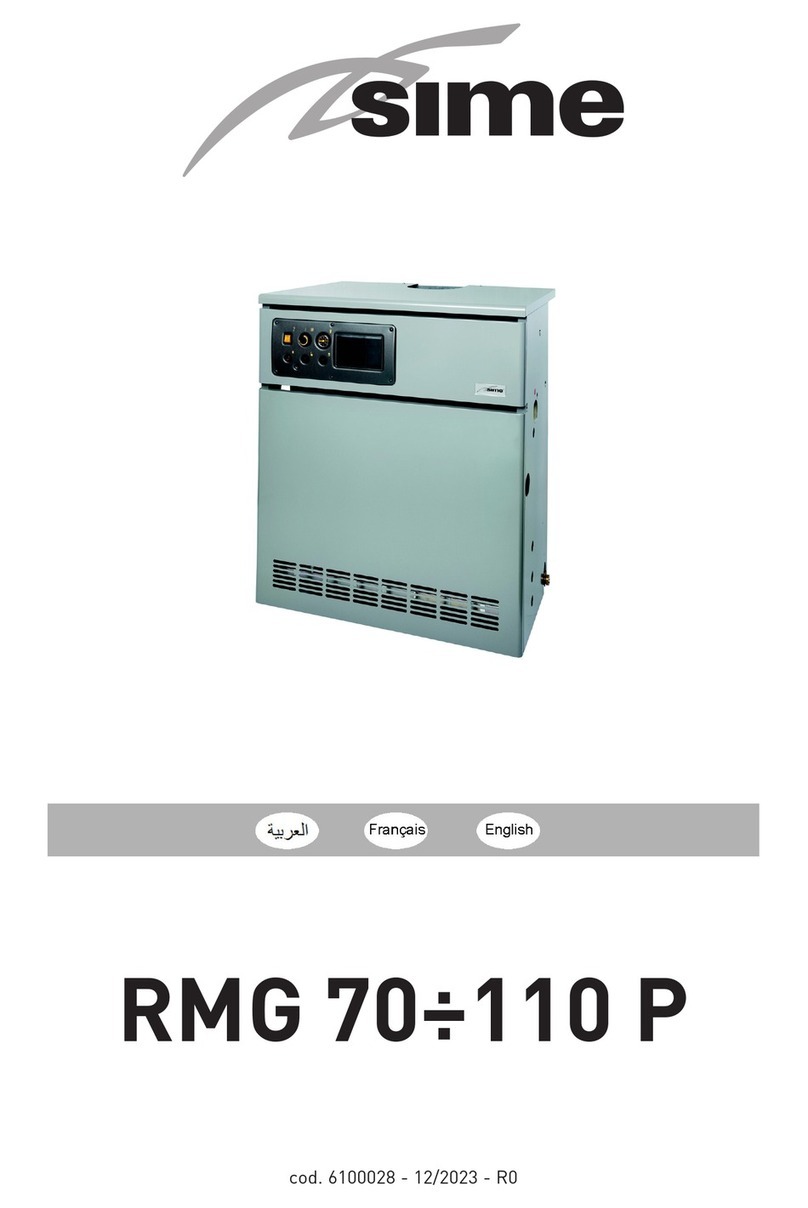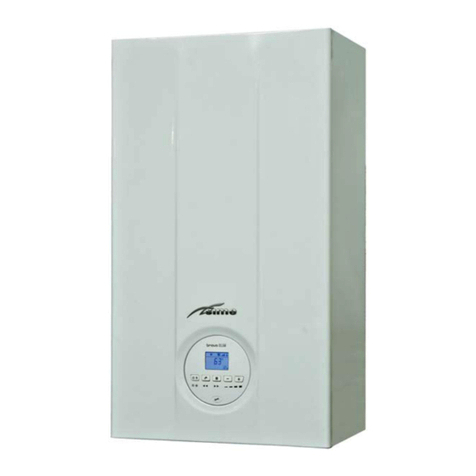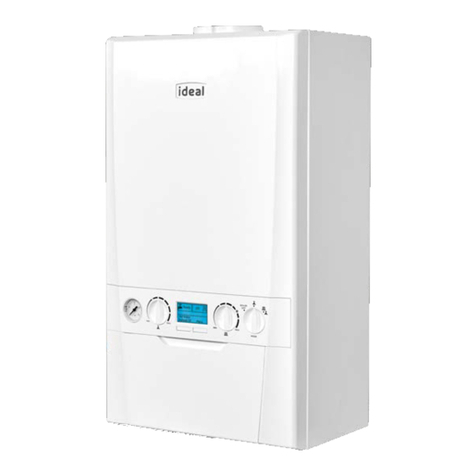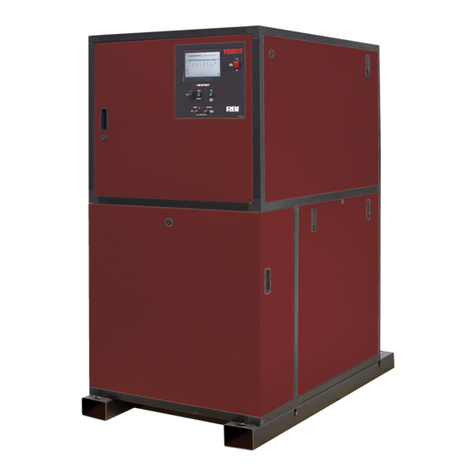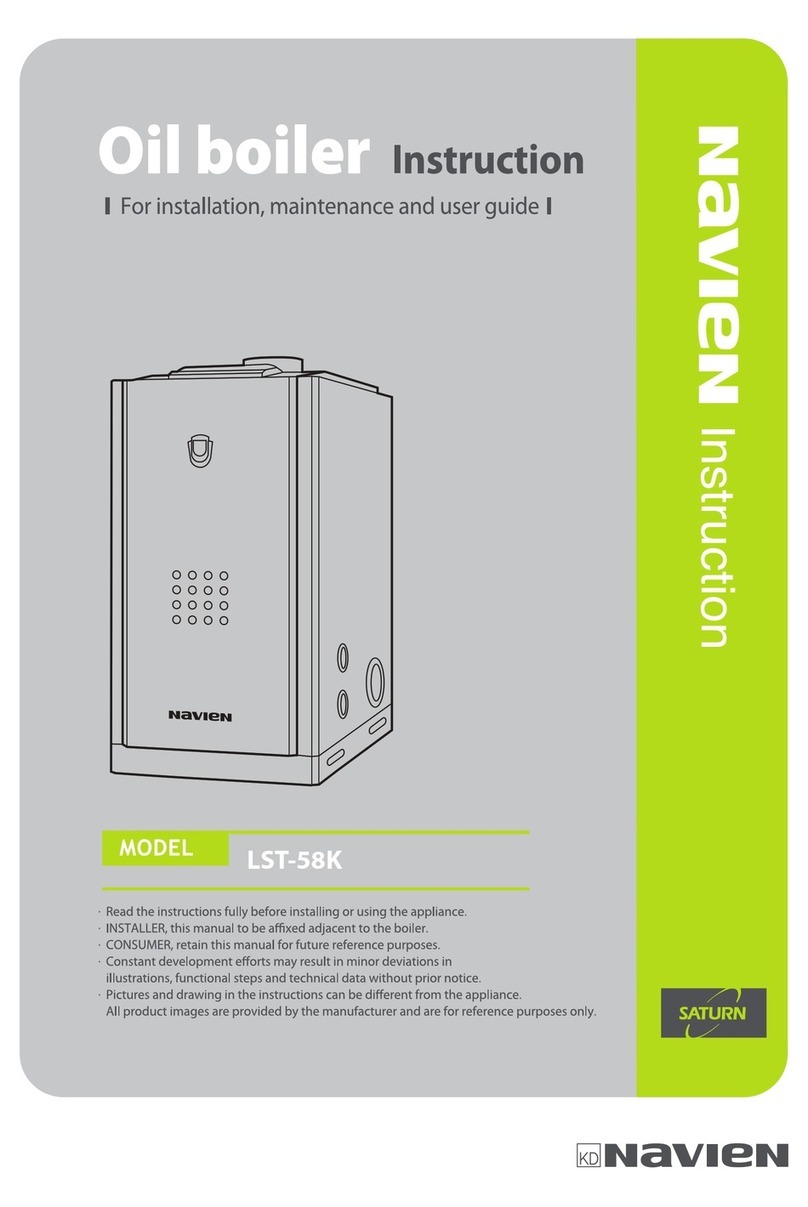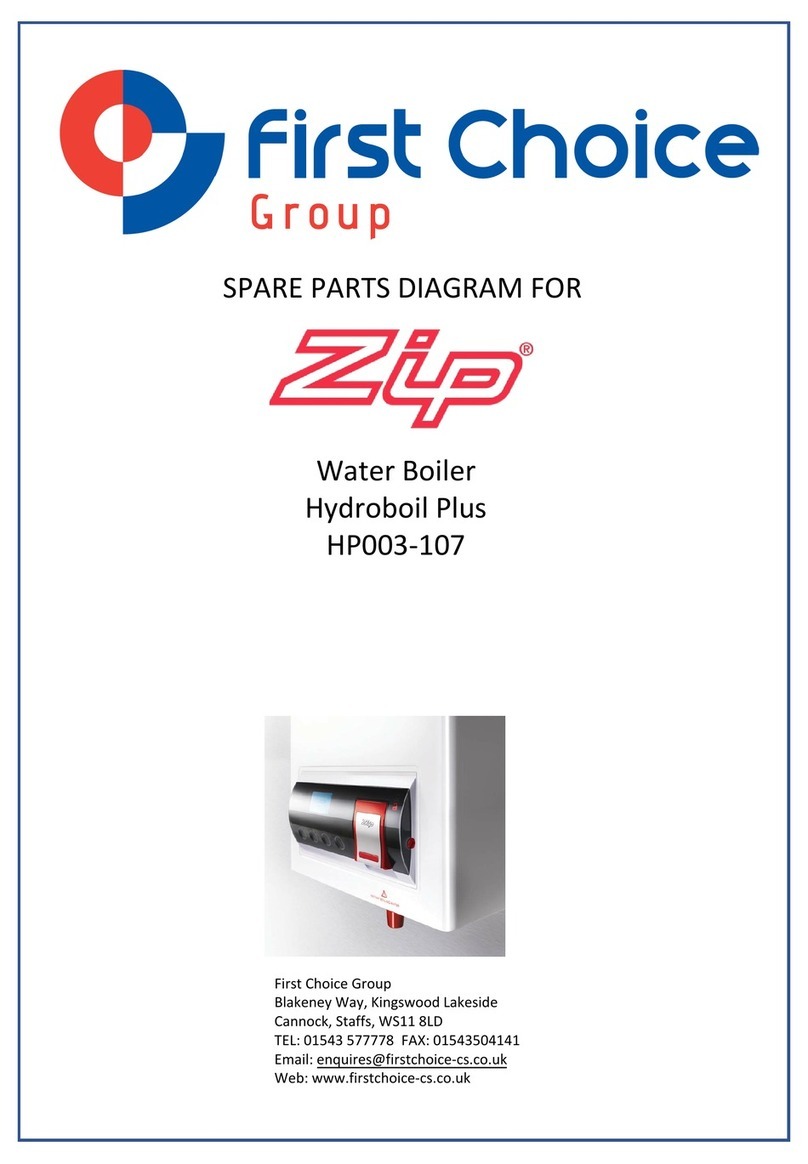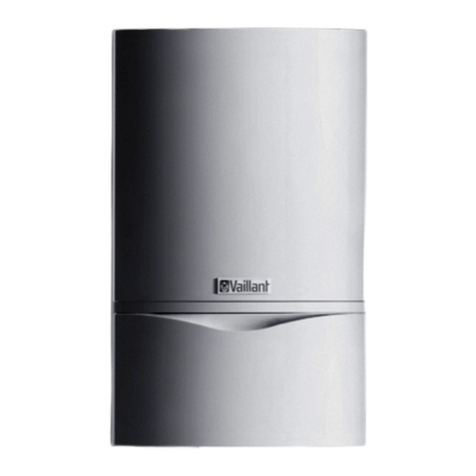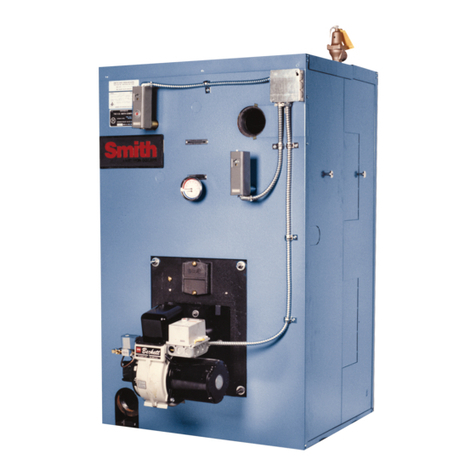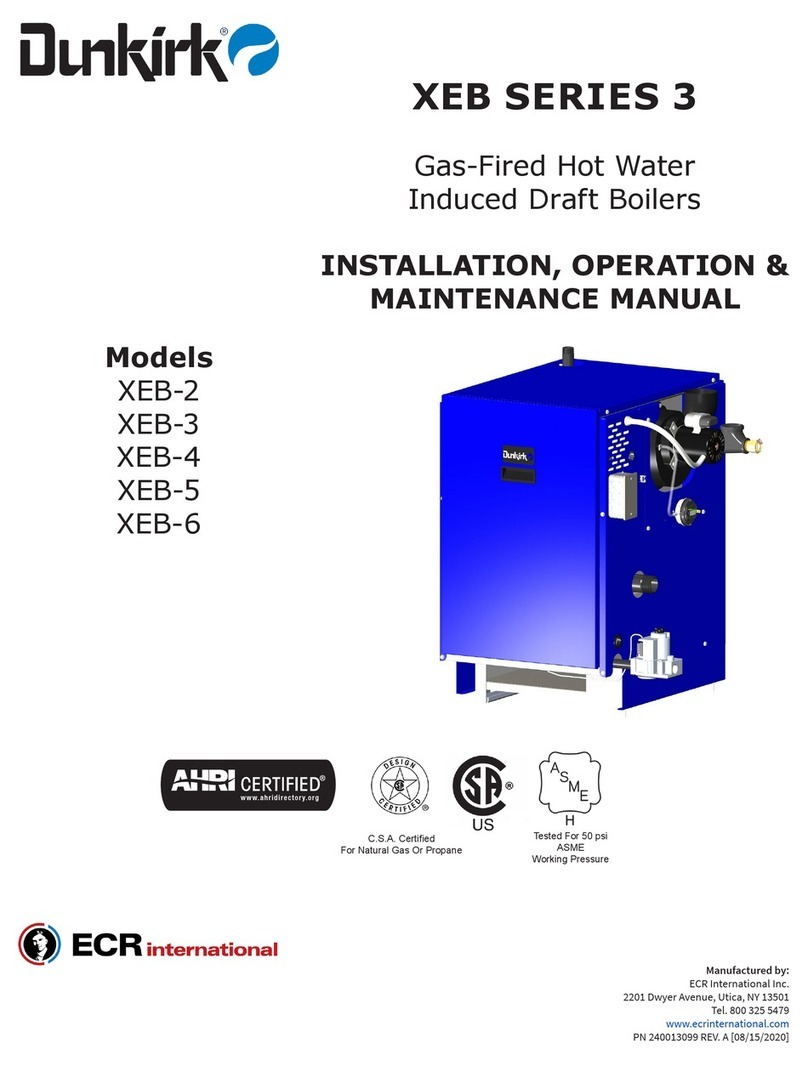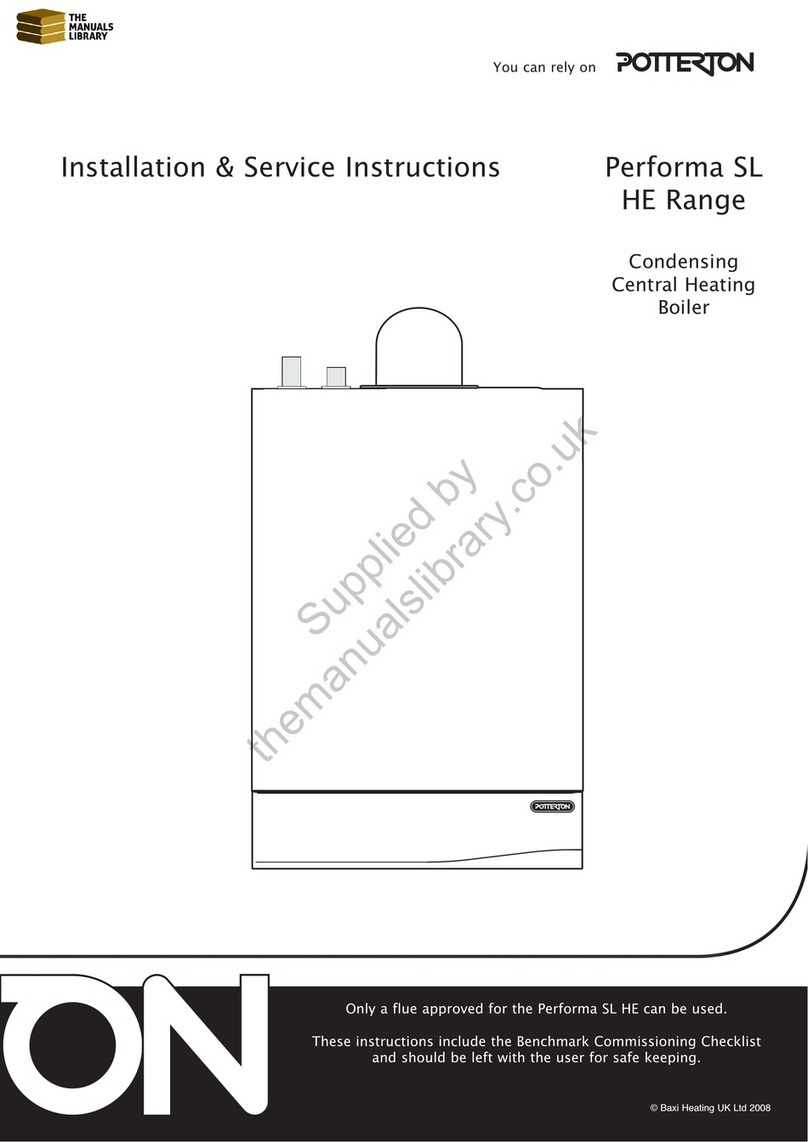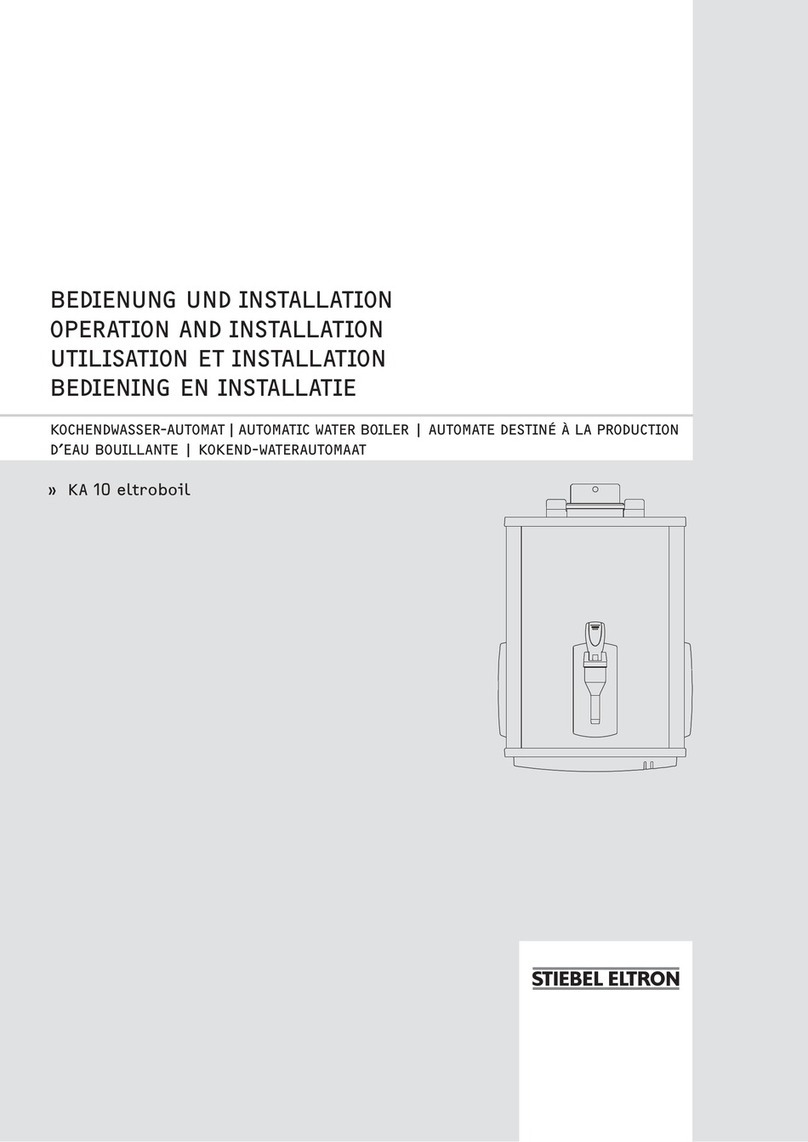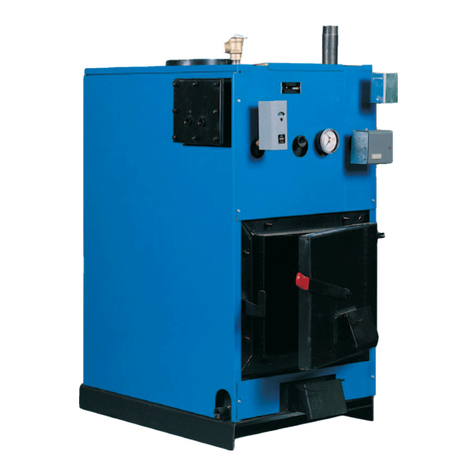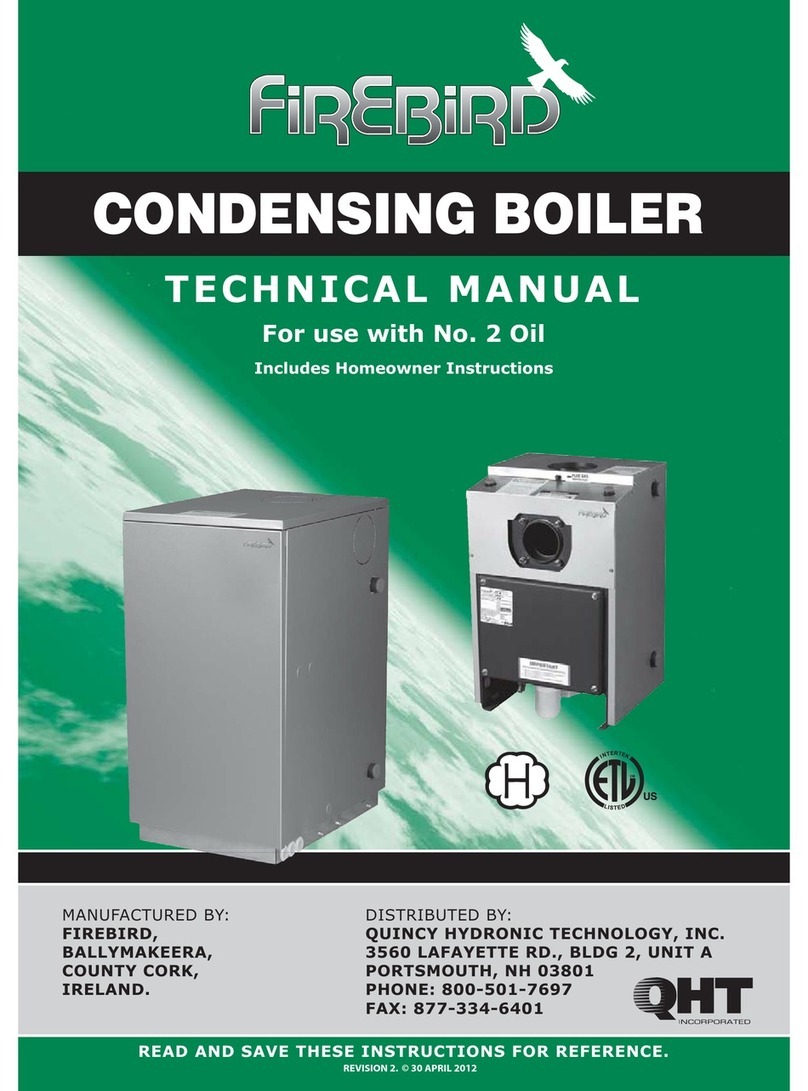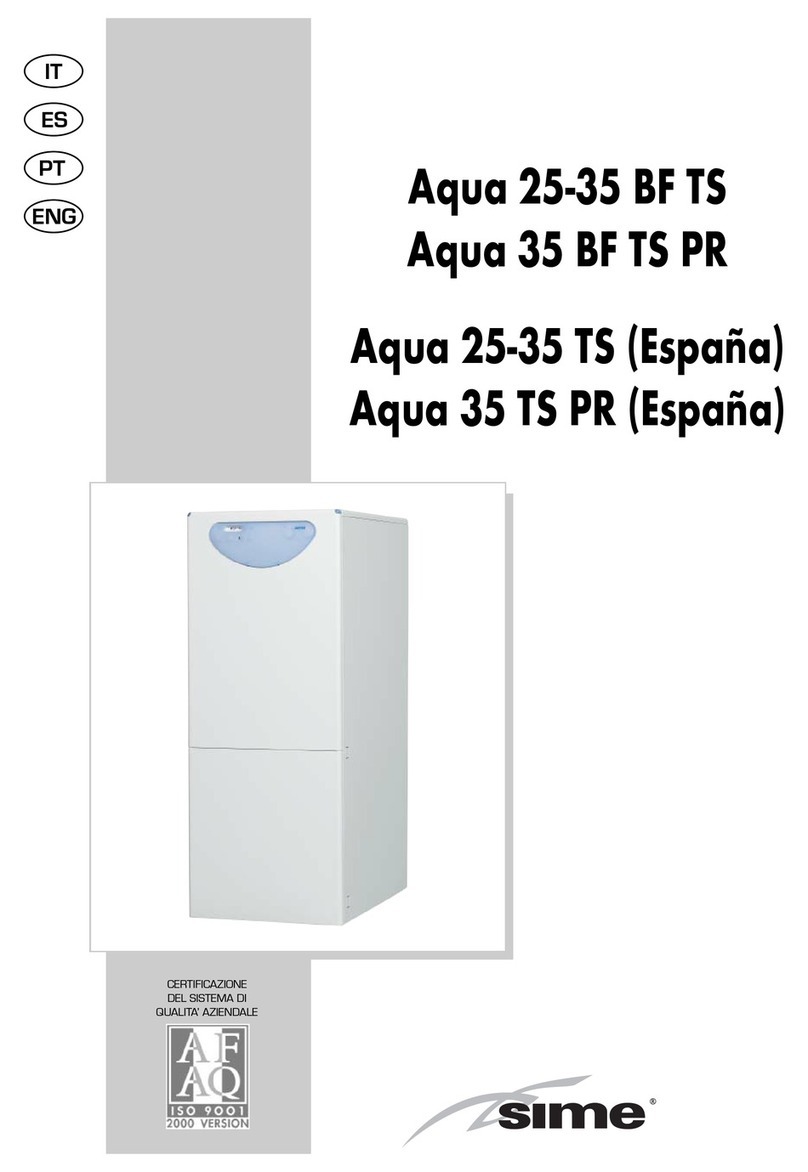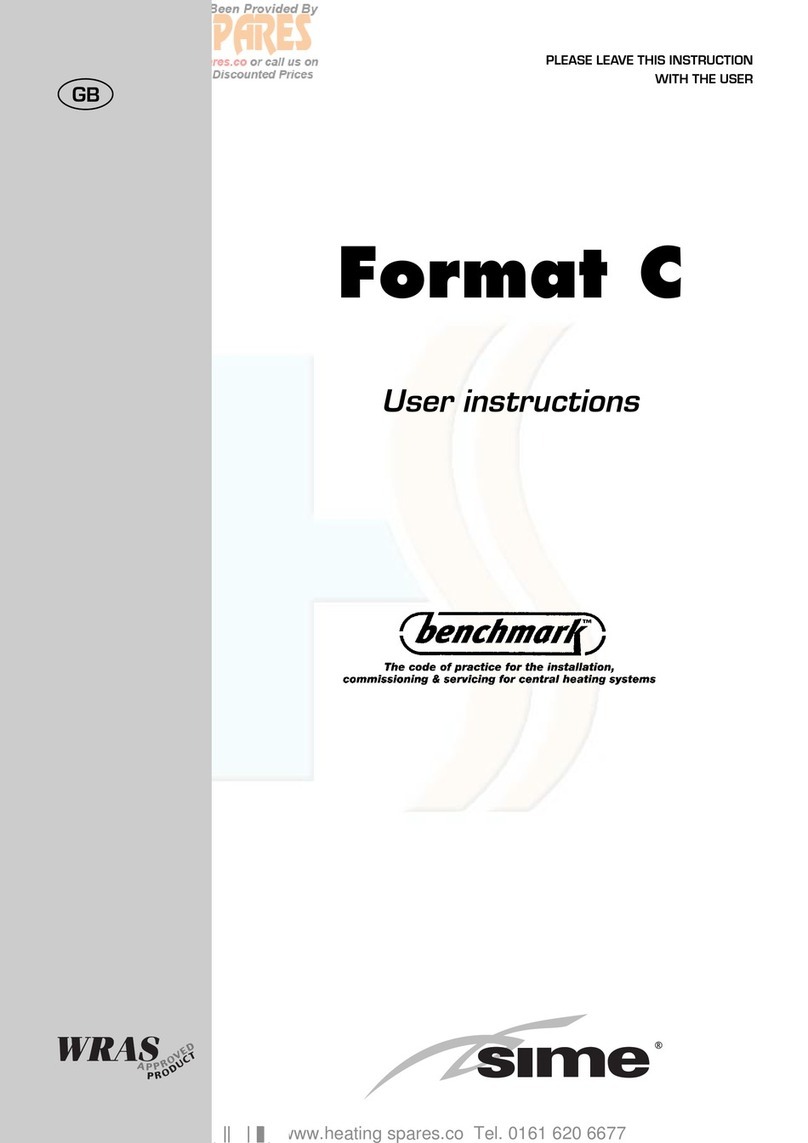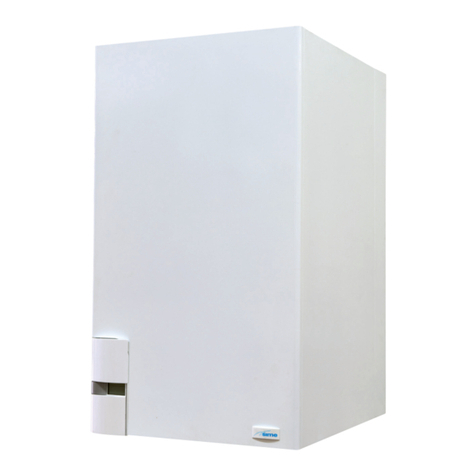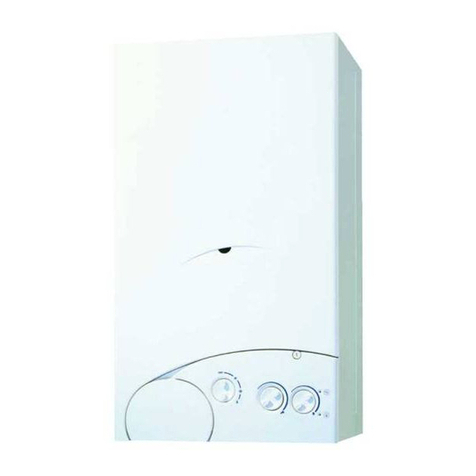using seamless steel pipe
(Mannesmann type), galvanized and
with threaded joints provided with
gaskets, excluding three-piece connec-
tions, except for initial and end connec-
tions. Where the piping has to pass
through walls, a suitable insulating
sleeve must be provided.
When sizing gas piping, from the
meter to the boiler, take into account
both the volume flow rates (consump-
tion) in m3/h and the relative density of
the gas in question.
The sections of the piping making up
the system must be such as to gua-
rantee a supply of gas sufficient to
cover the maximum demand, limiting
pressure loss between the gas meter
and any apparatus being used to not
greater than:
1.0 mbar for family II gases (natural
gas);
2.0 mbar for family III gases (butane
or propane).
An adhesive data plate is sticked inside
the front panel; it contains all the tech-
nical data identifying the boiler and the
type of gas for which the boiler is
arranged.
2.2.1 Filter on the gas pipe
The gas valve is supplied ex factory
with an inlet filter, which, however, is
not adequate to entrap all the impuri-
ties in the gas or in gas main pipes.
To prevent malfunctioning of the valve,
or in certain cases even to cut out the
safety device with which the valve is
equipped, install an adequate filter on
the gas pipe.
2.3 CHARACTERISTICS
OF FEEDWATER
It is absolutely essential that the water
for the central heating system is to be
treated in the following cases:
Very extensive system (with high
contents of feedwater).
Frequent addition of makeup water
into the system.
Should it be necessary to empty the
system either partially or totally.
2.4 SYSTEM FILLING
The filling shall be made slowly so that
air bubles are eliminated through the
vents. The charge pressure, with the
system cold, must between 1 and 1,2
bar. The system loading pipe can be
connected with the 1/2” coupling on
the back header or, on the “PVA”
models, on the cross coupling connec-
ted to the expansion tank.
2.5 FLUE
A flue for the discharge into the atmo-
sphere of the products of combustion
of natural draught plants must have
the following characteristics:
be sealed against the products of
combustion, waterproof and insu-
lated;
be made of materials capable of
withstanding normal mechanical
stresses, heat and the action of the
products of combustion and their
condensate;
be vertical and with no narrowing
throughout its whole length;
be properly insulated to avoid flue
gases condensing or cooling, espe-
cially if it is placed outside a building
or in rooms with no heating;
be kept at a safe distance from com-
bustible and easily inflammable
materials by an air space or any
other suitable insulating material;
have a chamber collecting solid
materials and condensates below
the mouth of the first flue; this
chamber must be at least 500 mm
high. Access to this chamber must
be ensured through a hole with an
airtight metal door;
its inner section must be round, squa-
re or rectangular; if it is square of
rectangular, the corners must be
round and have a radius of 20 mm
minimum; however, hydraulically equi-
valent sections are also permitted;
be topped by a chimneypot having its
outlet outside the reflux area in
order to avoid back pressures which
may obstruct the free discharge of
flue gas into the air;
there must be no mechanical suc-
tion equipment at the top of the pipe;
there must be no overpressure in
stacks placed inside or adjacent to
inhabited rooms.
2.5.1 Flue connection
Fig. 3 refers to the boiler connection
to the flue or to the stack through flue
ducts. In making the connection obser-
ve the dimensions given and use sea-
ling materials capable of withstanding
mechanical stresses and flue heat
over time.
At any point of the flue the burnt gas
temperature shall not exceed the dew
point temperature. Maximum three
changes of direction can be made,
including the union to the stack/flue.
For changes of direction, use only cur-
ved components.
2. ELECTRIC CONNECTION
The boiler is equipped with an electric
cable with plug and shall be supplied
with 230 V - 50 Hz single-phase cur-
rent through a fuse protected switch
having a minimum distance of 3 mm
between the pins.
The room thermostat (class II accor-
ding to EN 60730.1), which should be
installed to ensure a good temperatu-
re control, must be connected to ter-
minals 1 and 4 after the existing brid-
ge has been removed.
NOTA: SIME refuses all responsibility
for damage to people or things due to
non-earthing of the boiler.
48
Fig. 3













